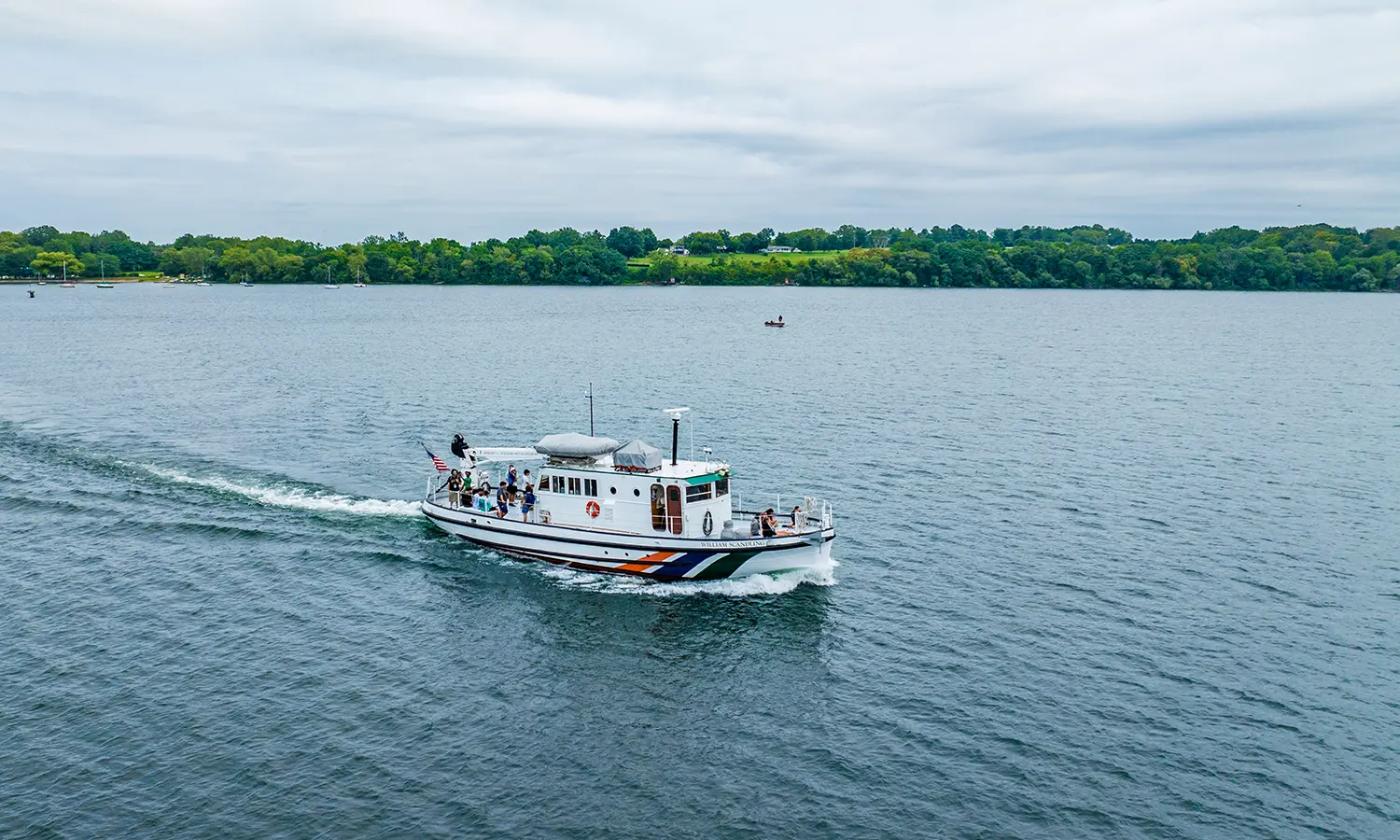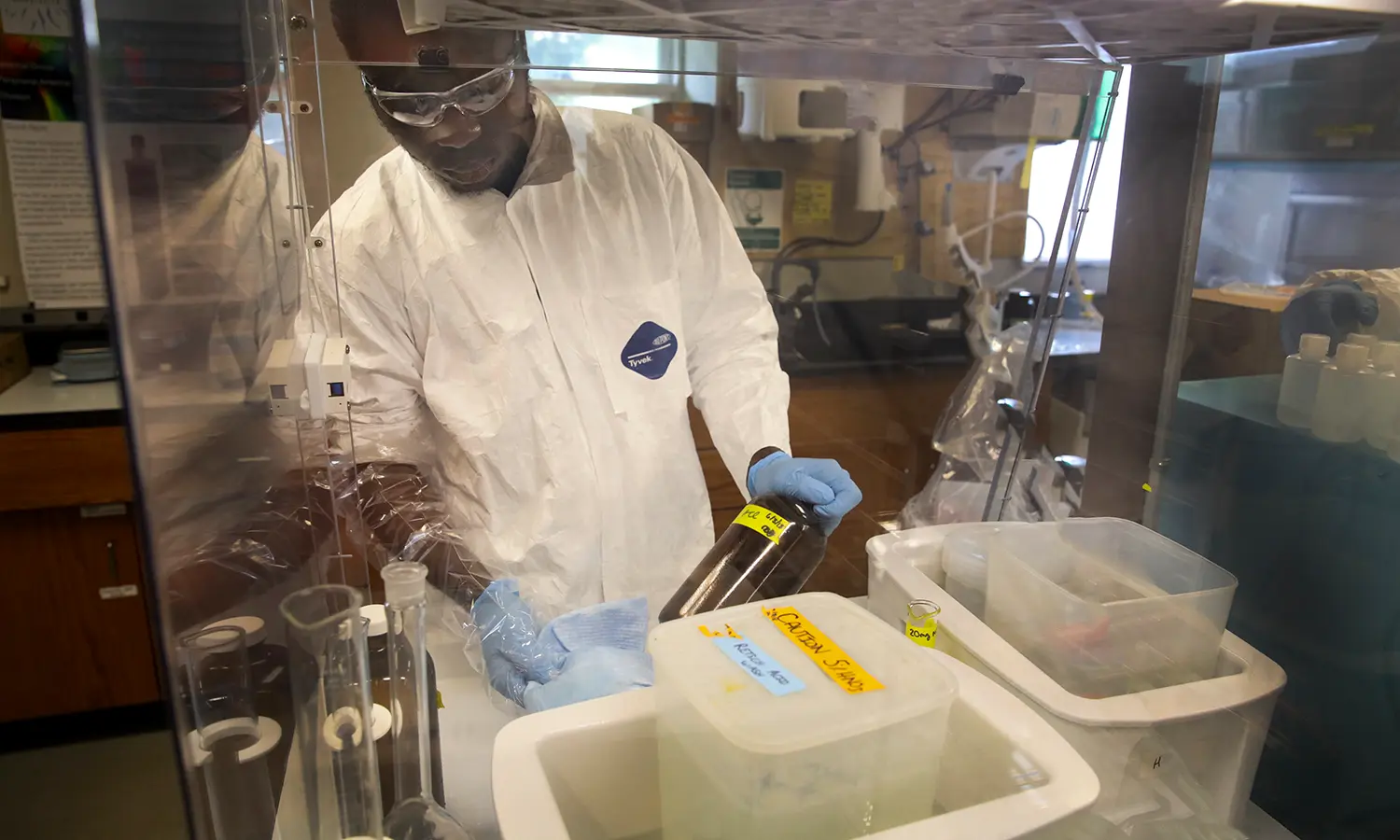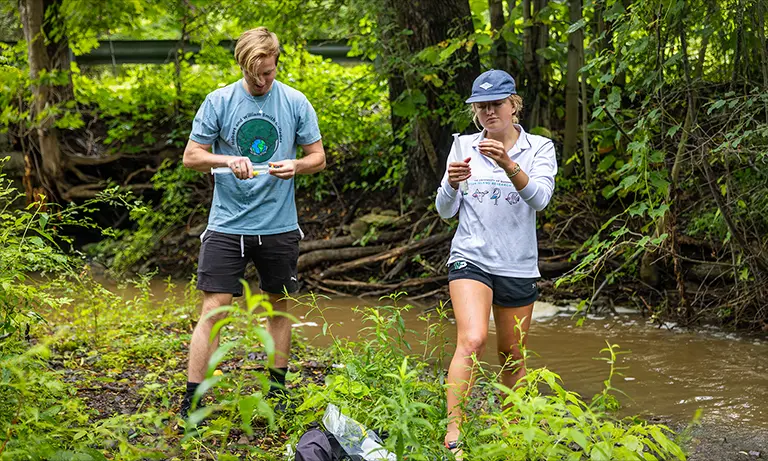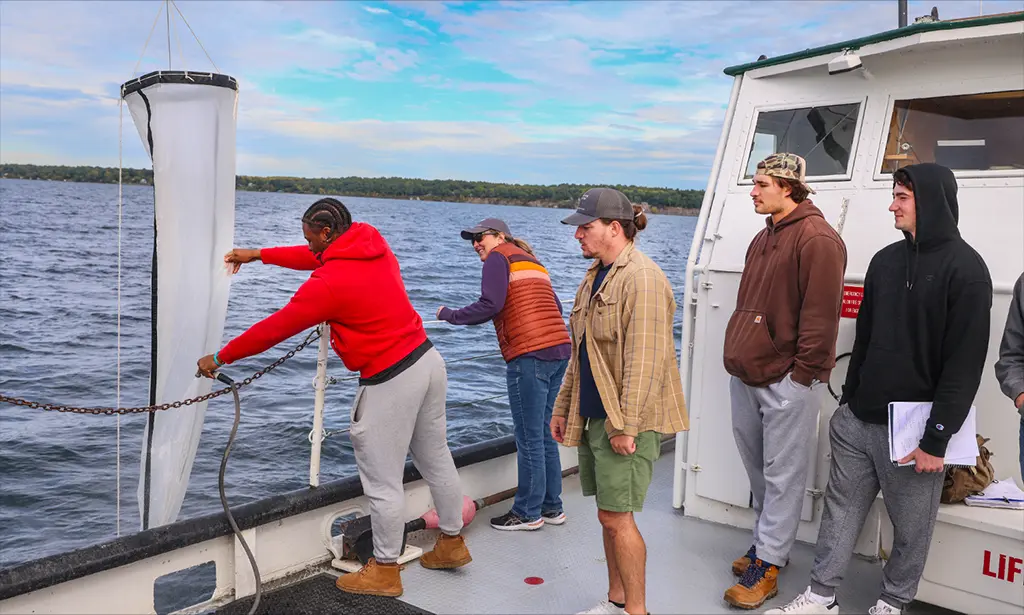Hobart and William Smith is surrounded by plenty of natural resources to help you study Environmental Science.

The 108-acre Hanley Biological Field Preserve, owned and operated by HWS and the Department of Biology, has over 60 natural and man-made ponds. The major vegetation types include agricultural fields, deciduous forest, old field/scrub and a small stand of pines. The preserve also hosts a wide diversity of plants and animals, including whitetail deer, coyotes, red fox, beaver, mink, muskrats, redtail hawks, great blue herons, green herons, Canada geese and many species of ducks.

Coopers' Woods offers 27 acres of space to explore and conduct research, all adjacent to the Arts Campus.

At nearly 35 miles long and more than 600 feet deep, Seneca Lake offers the perfect setting to conduct water research, especially with the help of the R/V William Scandling research vessel. Owned by HWS, the ship is used for sediment, water and biota studies. Equipment onboard includes a stereomicroscope, a binocular microscope with camera, and CTDs for determining temperature, salinity, chlorophyll concentration, transparency, pH and dissolved oxygen content of the water column. Additional instrumentation deployed using the research vessel includes high resolution seismic profiling and side scan sonar equipment, along with sediment traps, acoustic Doppler current profilers and sediment traps. Learn more about the history of the R/V William Scandling.

The Finger Lakes Institute offers research and professional development opportunities to learn more about the Finger Lakes, provide an understanding of environmental issues to regional policy makers and the public and inform the community of existing and emerging water quality issues.




![$intro-image[2]/descendant::img/@alt](/images/academics/envsci/environmental-science-abroad-australia.webp)









